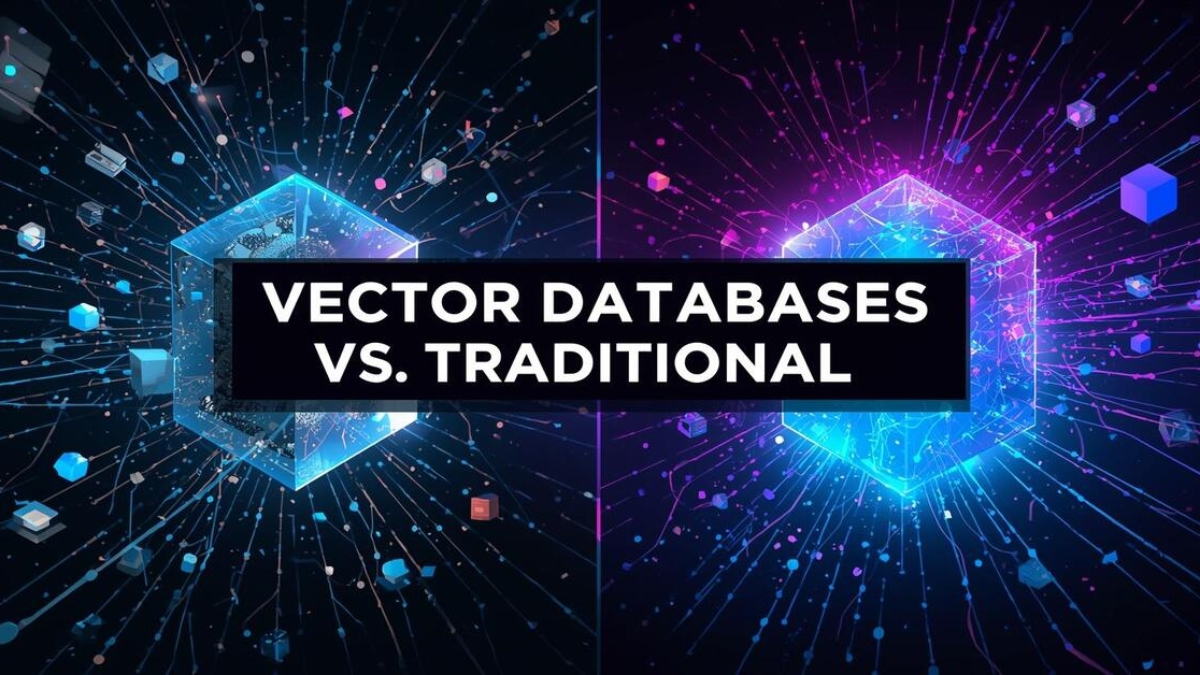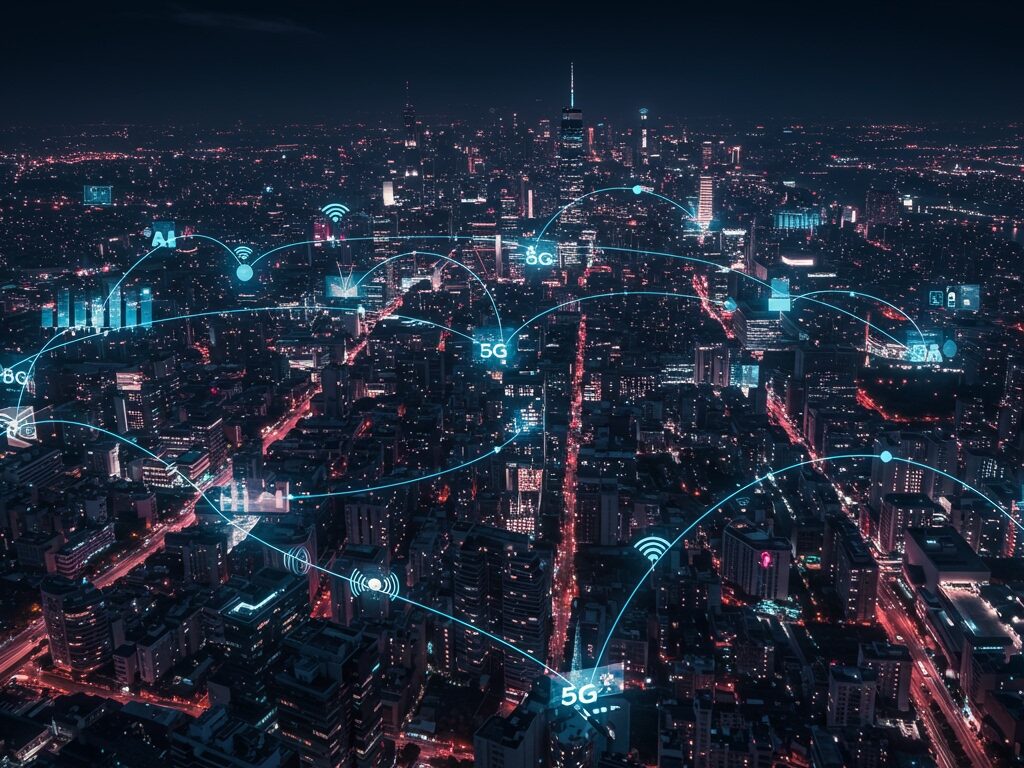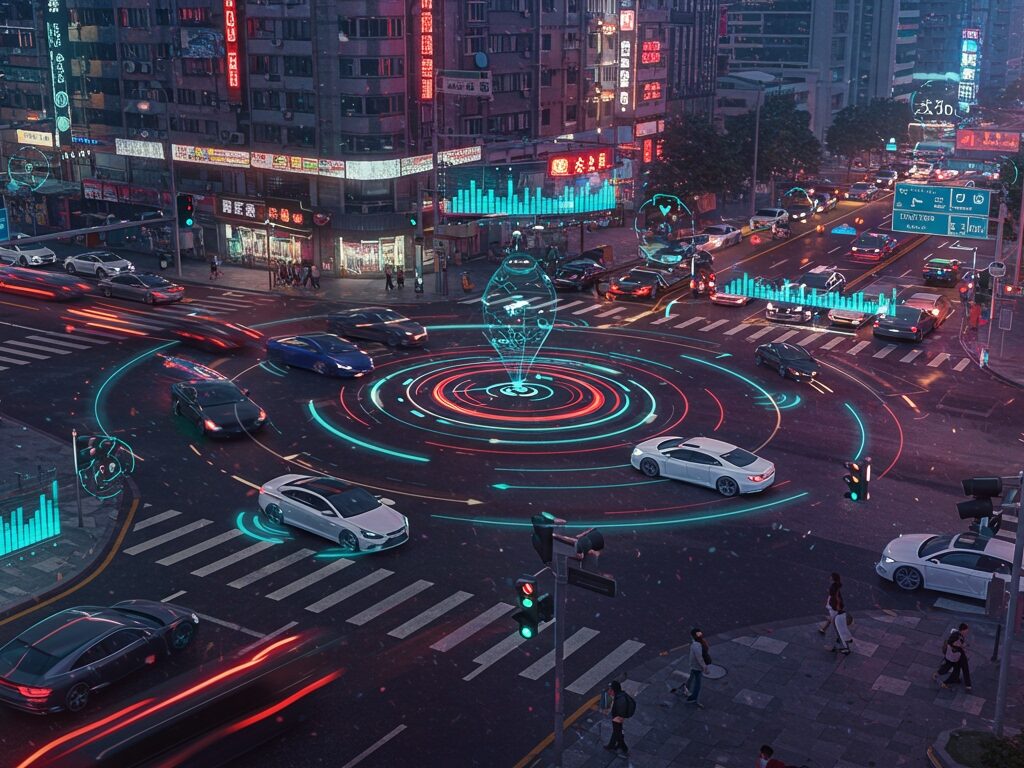Table of Contents
Vector Databases vs. Traditional: The Future of AI Search
In the rapidly evolving landscape of artificial intelligence, developers and architects are constantly making critical decisions about their infrastructure. One of the most common questions I encounter is: “Why should I choose a vector database over a traditional relational or NoSQL database for my AI search applications?” It’s a valid question, as traditional databases have served us well for decades. However, the unique demands of AI-driven search, particularly the need to understand meaning and context rather than just keywords, have ushered in a new era of data management.
Imagine you’re building a system that needs to find “documents about sustainable energy innovation” or “images similar to this abstract painting.” A traditional database would struggle immensely with such nuanced queries. This is precisely where vector databases shine, offering a paradigm shift in how we store, index, and retrieve data for intelligent applications.
Key Takeaways
- Semantic Understanding: Vector databases excel at comprehending the meaning and context of data, enabling “semantic search” instead of rigid keyword matching.
- High-Dimensional Efficiency: They are purpose-built to store, index, and query high-dimensional vector embeddings, which are numerical representations of complex data like text, images, and audio.
- Optimized for Similarity: Unlike traditional databases focused on exact matches, vector databases are optimized for “similarity search,” finding data points that are mathematically close in a vector space.
- Scalability for AI Workloads: Vector databases offer the specialized indexing (e.g., HNSW, ANN) and distributed architectures necessary to handle massive volumes of embeddings for real-time AI applications.
The Traditional Database Landscape: Strengths and Strains
For years, our digital world has been powered by two primary categories of databases: relational (SQL) and NoSQL. Both have their undeniable strengths, but also distinct limitations when faced with the demands of modern AI search.
Relational Databases (SQL)
Think of relational databases like PostgreSQL or MySQL as meticulously organized filing cabinets. They store structured data in tables with predefined schemas, using rows and columns to represent entities and their relationships. They are the workhorses for transactional data, ensuring ACID properties (Atomicity, Consistency, Isolation, Durability) and handling complex queries that involve joins, filters, and aggregations with remarkable precision.
However, their strength in structure becomes a weakness in AI search. Relational databases are built for exact matches and predefined relationships. If you search for “all customers named Jane,” they deliver instantly. But ask them to “find customers with similar interests to Jane,” and they’d simply stare blankly. They lack the inherent capability to understand the nuanced “similarity” or “meaning” required for AI applications.
NoSQL Databases (Document, Key-Value, Graph)
NoSQL databases like MongoDB or Cassandra offer more flexibility, scalability, and a schema-free nature, making them suitable for handling large volumes of unstructured or semi-structured data. They excel in distributed environments and can adapt to rapidly changing data formats, which is common in many modern applications.
While better equipped for varied data types than relational databases, most NoSQL databases still fundamentally rely on keyword-based indexing or exact property matching for search. They can store complex JSON documents, but retrieving data based on its semantic content – its underlying meaning – remains a significant challenge. Attempting to force similarity search into a traditional NoSQL database often leads to inefficient, computationally expensive, and ultimately unsatisfactory results.
Entering the Vector Database Era: Understanding Meaning
The core limitation of traditional databases for AI search is their inability to grasp “meaning.” This is where vector databases enter the scene, built from the ground up to understand and query data based on its semantic content. The magic begins with something called vector embeddings.
What are Vector Embeddings?
At their heart, vector embeddings are numerical representations of data – whether it’s text, images, audio, or even user behavior – transformed into fixed-length arrays of numbers. Think of an embedding as a coordinate in a multi-dimensional space. The fascinating part is that **semantically similar items are positioned closer together in this space**, while dissimilar items are further apart.
For example, the sentences “What’s the weather like today?” and “How’s the current meteorological condition?” would have very close vector embeddings, even though their exact wording differs. This transformation is typically done using sophisticated machine learning models (like BERT for text or CNNs for images) that capture the intrinsic meaning and context of the data.
How Vector Databases Work
A vector database is a specialized system designed to store, index, and query these high-dimensional vector embeddings efficiently. Unlike traditional databases that optimize for structured queries or exact matches, vector databases are optimized for similarity search.
When you input a query (e.g., a sentence, an image), it’s first converted into its own vector embedding using the same model that generated the stored embeddings. Then, the vector database employs advanced algorithms like Approximate Nearest Neighbor (ANN) search, often using techniques such as Hierarchical Navigable Small World (HNSW) graphs or locality-sensitive hashing (LSH), to quickly find the vectors that are “closest” to your query vector in the multi-dimensional space.
The “closeness” is measured by various distance metrics, such as cosine similarity or Euclidean distance, which mathematically quantify how alike two vectors are. The result is a list of items that are semantically similar to your query, even if they don’t contain the exact keywords.
The AI Search Advantage: Why Vector Databases Shine
The capabilities of vector databases translate directly into powerful advantages for AI search applications:
- True Semantic Understanding: This is the game-changer. Vector databases enable search engines to interpret user intent and meaning rather than just matching keywords. This leads to far more relevant and intuitive search results, especially for complex or ambiguous queries.
- Efficiency with High-Dimensional Data: AI models generate embeddings that can have hundreds or even thousands of dimensions. Traditional databases would buckle under the computational load of comparing such complex data points. Vector databases are built to handle this scale efficiently, using specialized indexing techniques for lightning-fast retrieval.
- Scalability for AI Workloads: As AI applications deal with increasingly vast datasets—millions or billions of embeddings—vector databases are designed for horizontal scaling through distributed architectures. This ensures real-time performance even with massive data growth.
- Powering Advanced AI Use Cases:
- Retrieval-Augmented Generation (RAG): Vector databases are crucial for grounding Large Language Models (LLMs) in specific, up-to-date, or proprietary data, reducing hallucinations and enhancing the relevance of generated responses. They provide the context LLMs need for in-context learning.
- Recommendation Systems: By encoding user preferences and item features as vectors, vector databases can quickly find similar items, enabling highly personalized recommendations for products, movies, or content.
- Image and Audio Search: Instead of relying on metadata or tags, you can search for images “like this one” or audio clips with a “similar sound” by comparing their vector representations.
- Anomaly Detection: Identifying outliers in data patterns becomes efficient by finding vectors that are unusually distant from clusters of normal behavior.
When Traditional Still Reigns and Embracing Hybrid Approaches
While the advantages of vector databases for AI search are clear, it’s crucial to understand that they are not a silver bullet, nor are they meant to entirely replace traditional databases. Each tool has its optimal use case.
Limitations of Vector Databases
Vector databases do come with certain trade-offs:
- Approximate Results: Many vector search algorithms (like ANN) prioritize speed and scalability, meaning they return “approximately” the nearest neighbors, not always the absolute exact matches. For applications requiring 100% precision, this might be a concern.
- Less Rich Representation: They primarily relate data points based on numerical similarity. They may not inherently provide the rich, explicit relational context (like hierarchical structures or complex joins) that traditional databases excel at.
- Complexity and Cost: Setting up, managing, and scaling a dedicated vector database can require specialized knowledge and computational resources, potentially increasing infrastructure complexity and cost, especially for smaller-scale applications.
- Limited Query Capabilities: While great for similarity, vector databases are not designed for complex analytical queries, aggregations, or strict transactional integrity in the way relational databases are.
The Power of Hybrid Architectures
In many real-world scenarios, the most effective solution involves a hybrid approach, combining the strengths of both traditional and vector databases. For instance, you might use a relational database to manage customer accounts and order history (structured data, exact matches) while a vector database handles personalized product recommendations or semantic search of product reviews (unstructured data, similarity search).
Some traditional databases are also evolving to incorporate vector capabilities. Extensions like pgvector for PostgreSQL allow relational databases to perform nearest-neighbor searches, blurring the lines and offering a converged database approach for certain workloads. This can be particularly beneficial when strong consistency between vector and relational data is required, or when leveraging existing team expertise.
Frequently Asked Questions
What exactly are vector embeddings?
Vector embeddings are numerical representations (lists of numbers) of data like text, images, or audio. They are created by machine learning models to capture the semantic meaning and contextual relationships of the data. In a multi-dimensional space, similar items have embeddings that are numerically closer to each other.
Can I use a traditional database for semantic search?
While you can store vector embeddings as arrays in some traditional databases (like JSON fields in NoSQL or custom types in relational DBs), these databases are not optimized for efficient similarity search. Performing semantic search would typically involve computationally expensive brute-force comparisons or custom indexing that would struggle to scale, making them impractical for most AI search applications.
What are the main disadvantages of vector databases?
Key disadvantages include the approximate nature of many similarity search algorithms (sacrificing some accuracy for speed), limited capabilities for complex relational queries or aggregations, potentially higher operational complexity and cost, and less inherent interpretability of results compared to structured data.
What are some popular vector databases?
The market for vector databases is growing rapidly. Popular standalone options include Pinecone, Milvus, Qdrant, and Weaviate. Additionally, some traditional databases are adding vector capabilities, such as PostgreSQL with the pgvector extension, MongoDB Atlas Vector Search, and Elasticsearch.
How do vector databases handle updates to data?
Vector databases are designed to handle updates and insertions of new data efficiently. When data is updated or new data is added, it is first converted into embeddings, and then these new vectors are indexed within the database’s existing structure. Advanced indexing algorithms like HNSW support incremental additions, ensuring that the database remains performant even with dynamic data.
Conclusion
Choosing the right database is no longer a one-size-fits-all decision, especially in the era of AI. For applications that demand a deep understanding of content, context, and semantic similarity—the very essence of modern AI search—vector databases offer a purpose-built, highly efficient, and scalable solution. They empower systems to move beyond rigid keyword matching to deliver truly intelligent and intuitive search experiences. While traditional databases remain indispensable for structured, transactional data, understanding the unique strengths of vector databases will be crucial for any developer or architect building the next generation of AI-powered applications. The future, in many cases, will likely be a thoughtful blend, leveraging the best of both worlds to create robust and intelligent data architectures. To learn more about how AI is transforming data interaction, consider exploring AI’s role in modern data management.




